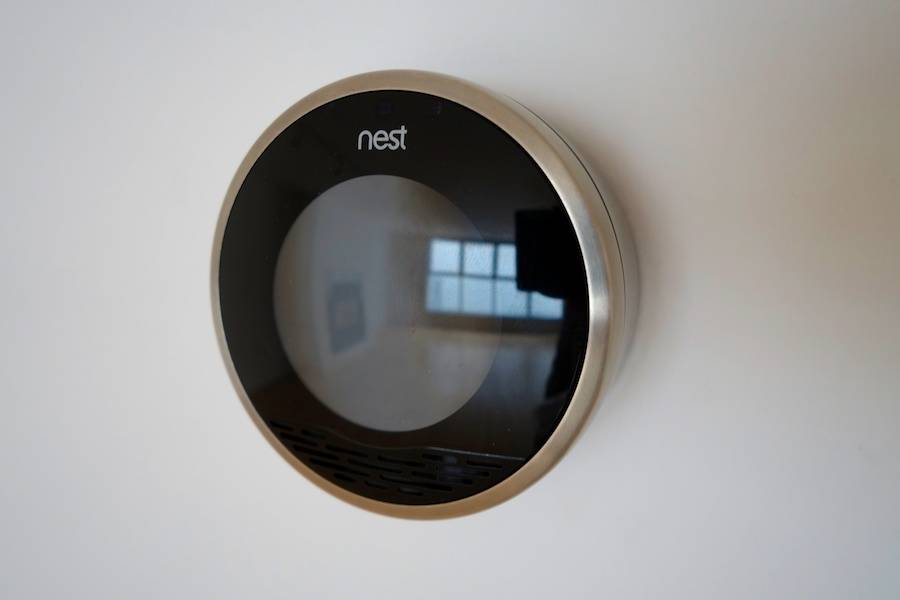This week, Nest and six other companies announced their master plan to make smart homes better. The secret, they say, lies in mesh networking, which lets gadgets talk to each other directly—no centralized hub necessary. To help the cause, the group even introduced its own brand-new mesh wireless protocol called Thread.
The group says this secure wireless technology enables better, secure and more energy-efficient mesh networking. And since it requires no extra hardware, product makers could even make existing appliances, sensors and devices compliant via a simple software update.
It’s a great idea, at least on the surface. But when you tear it down to look at the details, a few pesky threads start to come loose.
Threading Through Mesh Networks
See also: Nest’s Smart Home Ambitions Extend Past The Thermostat With Thread
If anyone knows the challenges of connecting gadgets, it should be the seven tech and home appliance makers making up the Thread Group founders.
Smart thermostat maker Nest, the subject of a pricey $3.2 billion Google acquisition earlier this year, has basically become the tech titan’s public face in the connected home market. Now it has joined forces with Samsung Electronics—which may be buying SmartThings, another smart home provider—as well as Yale Security (locks), Big Ass Fans, Silicon Labs, Freescale Semiconductor and ARM.
It’s a diverse collection of partners banded together with a common goal of getting in on the trendy smart home action. Now they’re banking that Thread can help lead the way.
The core idea seems sound. Most smart homes rely on a central hub to tie devices together, so things like lights, locks and thermostats can be automated or remote-controlled. By taking the hub out of the equation, mesh networks eliminate the chance a hub glitch could take down the whole system.

Still, mesh devices aren’t perfect. That’s why the group came up with Thread, to address some major issues—namely, devices that don’t work well together, battery drain and the fact that, despite their capacity for direct connections, those gadgets still tend to connect through hubs. According to the press release, Thread can “easily and securely connect more than 250 devices into a low-power, wireless mesh network that also includes direct Internet and cloud access for every device.”
Nest’s Chris Boross, the group’s president, described Thread as simple but powerful; secure, thanks to encryption, yet easy for companies to support. “It’s not a standard,” he said. “It’s a layer—the networking piece, not a top-to-bottom networking stack.” There are plenty of smart home networking standards complicating matters as it is. But Thread, as a smaller piece of the networking pie, doesn’t force developers to rewrite their software to work with it.
“They’ll end up with a network that is more reliable, and doesn’t rely on a gateway or hub to keep it alive. They can just add or remove products [from the mesh network],” he said.
Many smart home gadgets already have the necessary hardware to work with Thread, which requires no additional parts. That means several existing appliances, sensors, lights, presence detectors, locks and other products on the market could be updated retroactively to work with it.
Well, at least some of them could. But not all.
The Stitches Are Fraying
The press statement requires a little reading between the lines. It announced that Thread only works with the 802.15.4 wireless standard, a particular low-cost, low-speed personal area networking technology. Although it doesn’t mention it in the announcement, only one out of the three major networking standards for home automation uses it: ZigBee.
It’s worth noting that Nest comes with ZigBee wireless networking, and already supports some version of Thread. More could be on the way. Between 2012 and 2018, ZigBee and 802.15.4-based gadgets will make up 43% of the wireless chipsets used for smart home lighting, energy management and other metered devices.
Even so, that accounts for less than half of the market. Thread still ignores the other two major home automation standards, Z-Wave and Insteon, not to mention Bluetooth products and growing range of Wi-Fi-only products. Or at least it will when it gets released. As of now, Thread’s not available yet.
The group hopes that consumers will see Thread-compliant products sometime in the first half of next year—though at this point, that seems more like a guess. If it seems vague, that’s because it is. And the reason became clear after I pressed for details:
• Thread will be available later this year (but they don’t know when exactly).
• It will be free (but only to group members).
• Membership will come with a fee (though who knows how much).
• Companies can apply to join Thread (but applications aren’t accepted yet. Soon. Sometime this year. Could be later this summer. Maybe.)
Thread’s promise is starting to unravel a bit. After digging in, it turns out to be an exclusionary technology with a vague compliance pathway, contradicting the group’s premise of making things better and easier.
What’s worse, after all that, Thread still may not make things better for consumers. In fact, it could make things worse. Shoppers will need to understand that Thread-compliance covers ZigBee, but not other standards, and not necessarily even all ZigBee devices. Just those whose makers join Thread (eventually).
“We need to focus on the consumer and deliver simple, affordable, and scalable solutions,” Kevin Meagher, vice president and general manager for Lowe’s smart home division, told me via email.
That’s really the key. Smart home users just want their thermostats to talk to their lights and cameras. They don’t want to become experts in wireless networking standards to make it happen. And they shouldn’t have to.
Homeowners should be able to connect home devices easily—no strings attached.
Netting image by Hiestun.Photography, Nest image by Bit Boy










